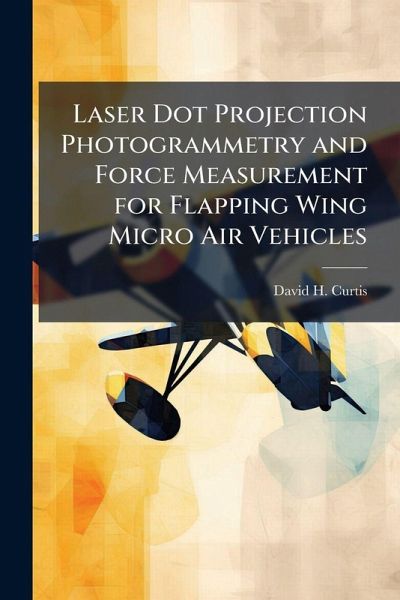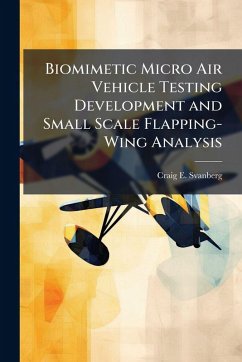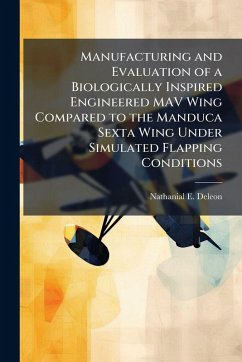
Laser Dot Projection Photogrammetry and Force Measurement for Flapping Wing Micro Air Vehicles
Versandkostenfrei!
Versandfertig in über 4 Wochen
17,99 €
inkl. MwSt.
Weitere Ausgaben:

PAYBACK Punkte
9 °P sammeln!
The purpose of this research was to develop testing methods capable of analyzing the performance of a miniature flapping-wing mechanism that can later be adapted to a flapping wing micro air vehicle (MAV). A previously designed and built flapping only mechanism was used for testing, while a previously designed flapping and pitch mechanism was fabricated utilizing an Objet Eden 500V 3-dimensional printer and its operation demonstrated. The flapping mechanism was mounted on a six component force balance. Force and moment data were collected for a variety of wing sets at different flapping freque...
The purpose of this research was to develop testing methods capable of analyzing the performance of a miniature flapping-wing mechanism that can later be adapted to a flapping wing micro air vehicle (MAV). A previously designed and built flapping only mechanism was used for testing, while a previously designed flapping and pitch mechanism was fabricated utilizing an Objet Eden 500V 3-dimensional printer and its operation demonstrated. The flapping mechanism was mounted on a six component force balance. Force and moment data were collected for a variety of wing sets at different flapping frequencies. The testing was conducted using wings composed of aluminum tubing and/or stainless steel wire for frame material, and thin latex as membrane material. The normal and axial force averages were taken with the force balance and compared. The axial force measurement was verified using an air bearing table and a load cell as a secondary means of measurement. Time accurate force data was also taken. A non-intrusive photogrammetry method using laser dot projection was developed allowing for the shape of the wing during flapping to be measured. This work has been selected by scholars as being culturally important, and is part of the knowledge base of civilization as we know it. This work was reproduced from the original artifact, and remains as true to the original work as possible. Therefore, you will see the original copyright references, library stamps (as most of these works have been housed in our most important libraries around the world), and other notations in the work. This work is in the public domain in the United States of America, and possibly other nations. Within the United States, you may freely copy and distribute this work, as no entity (individual or corporate) has a copyright on the body of the work. As a reproduction of a historical artifact, this work may contain missing or blurred pages, poor pictures, errant marks, etc. Scholars believe, and we concur, that this work is important enough to be preserved, reproduced, and made generally available to the public. We appreciate your support of the preservation process, and thank you for being an important part of keeping this knowledge alive and relevant.












